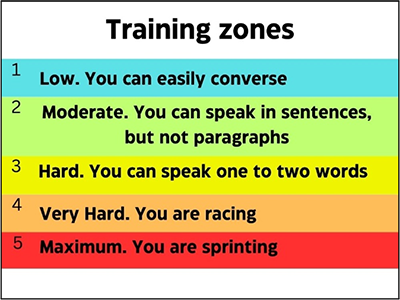
6 Ways To Safely Improve Stamina For Runners
Leave a CommentStamina and endurance are often used as interchangeable descriptors in the world of endurance sports. ‘Runners are known for impressive stamina’ or ‘Triathletes train their bodies for maximal endurance’ are synonymous on the surface. However, stamina and endurance do not have the same technical meaning. Stamina relates to an individual’s ability to sustain peak energy output. Endurance relates to the length of time an individual can sustain moderate level activity.
Consider these examples:
- A runner with good stamina can sprint past a competitor in the last 100 meters of a 5k race. Their stamina provides ultimate energy output (sprinting) before tiring.
- A runner with impressive endurance can run an entire marathon without stopping. Their endurance allows moderate energy output consistently for multiple hours.
A runner who improves their endurance can go from running two miles to being able to run 5 miles. A runner who improves their stamina can improve their half marathon from two hours to one and a half hours. Stamina and endurance are not either-or qualities for runners. Both are needed to improve race finish times. Non-competing runners who want to continue improving their running skill will also benefit from improved stamina.
Inspired to improve your stamina and drop a 5k PR? Awesome! In this article we will go over six physical therapist-approved ways to improve your running stamina. Let’s get started:
1. Sprint Repeats
After completing a warmup, head to a track, straight path, or section of road. Pick a distance that you will train for the day. Most runners will choose 200 to 800 meters. It’s important that the distance is short enough to allow maximal speed. Run this chosen distance at maximal speed, and then walk or jog to recover for 2-3 minutes. For your first workout, try just three to four of these sprint repeats. As you progress, try completing more. Always include an easy cool down run after your last repeat.
2. Hill Runs
Running up a hill naturally makes you work harder. You must lift your legs higher, pump your arms higher, and push with more force to propel your body up an incline. The key here is to maintain the same pace while ascending the hill as you can run on flat land. Here’s how to start: find a short section of incline, something around 100 to 200 meters max. Run up the hill at your standard running pace, crest the hill, and then walk back to the bottom as recovery. Try three to four of these hill runs on your first day, and as you start feeling stronger you can add one to two repetitions per week.
3. Fartleks
Think of these types of runs as loosely structured speed work. Their unstructured or unplanned nature is designed to make them fun. Set out running at a moderate pace. After a sufficient warmup distance, get ready for your first interval. Pick a visual target in the distance (a stop sign, a tree, a road crossing) and greatly increase your speed until your reach that target. Then slow back down to a moderate pace for a few minutes to recover. Find another visual target and increase your speed again, followed by another recovery period. Repeat the process over the length of your run, saving the last 10-15 minutes for easy pace.
4. Cross Train
Optimal stamina requires a certain level of strength. Muscles involved with posture, respiration, and motion need to be strong enough for the demands of running. We intuitively know that our thighs need to be strong. However, it is equally important that our core, back, and upper body muscles are strong enough to run. Think of building stronger muscles like putting a stronger engine in a race car. The end result is a higher capacity for force output (greater speed). Squats, planks (front and side versions), step ups, and rows are great exercises to start. Check out this Athletico blog for tips on how to start cross-training!
5. Utilize Zone Training
Most running coaches will agree with the following general statement; 80% of your training runs should be at an easy pace, and 20% of your runs should be hard. What does this mean in practice? Most of the time when you run, you should be in zone 2, which typically falls around 70% of your maximum heart rate. You can estimate if you are in zone 2 using the talk test.

If you can continue running while speaking in full sentences, you are likely in zone 2. By completing most of your runs in zone 2 you allow your body to rest and recover. This makes you totally rested and ready to give hard workouts 100% of your effort. Training runs targeted at increasing stamina should be in zones 4 and 5.
6. Have A Physical Therapist Analyze Your Running Form
In order to optimize running stamina, you can’t have wasted motion. Excess arm swing, stiff knees, or poor leg stability all cost extra energy that your body could direct towards faster running speeds. Schedule a visit with your endurance specialized physical therapist to set up a video gait running analysis. This therapist will use slow motion video to highlight running form corrections to improve your efficiency. This improved efficiency will translate into better power directed towards your running stamina!
As always, if pain or injury is holding you back from your runs, connect with an Athletico near you to schedule a free assessment. Free Assessments are available in-clinic and virtually through our Telehealth platform.
*Per federal guidelines, beneficiaries of plans such as Medicare, Medicaid, Tricare, VHA and other federally funded plans are not eligible for free assessments.
The Athletico blog is an educational resource written by Athletico employees. Athletico bloggers are licensed professionals who abide by the code of ethics outlined by their respective professional associations. The content published in blog posts represents the opinion of the individual author based on their expertise and experience. The content provided in this blog is for informational purposes only, does not constitute medical advice and should not be relied on for making personal health decisions.
